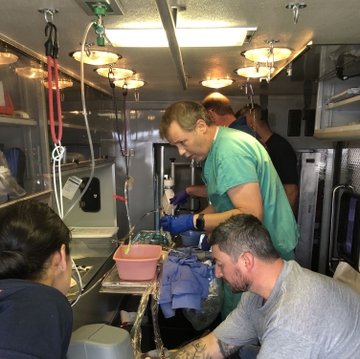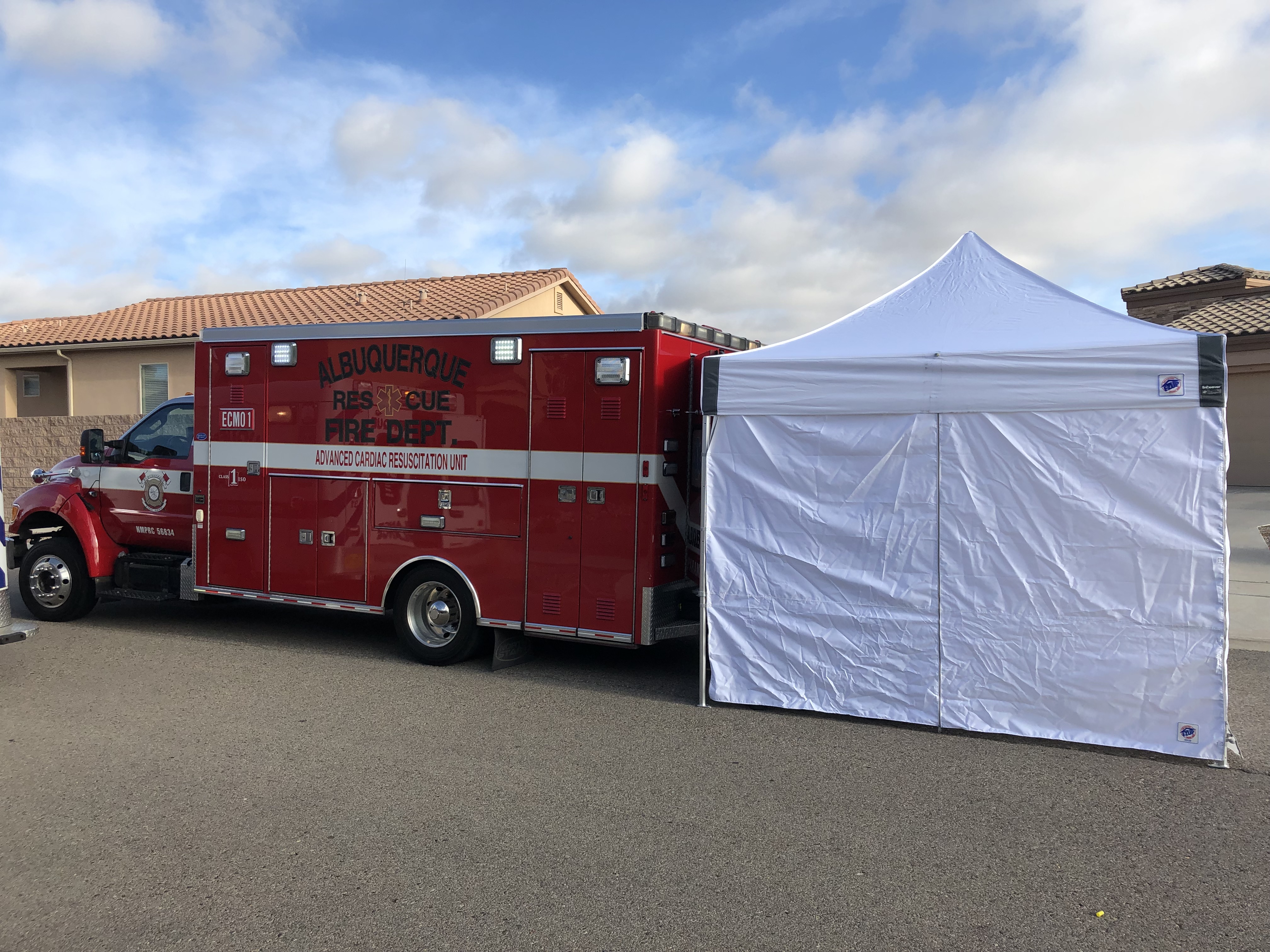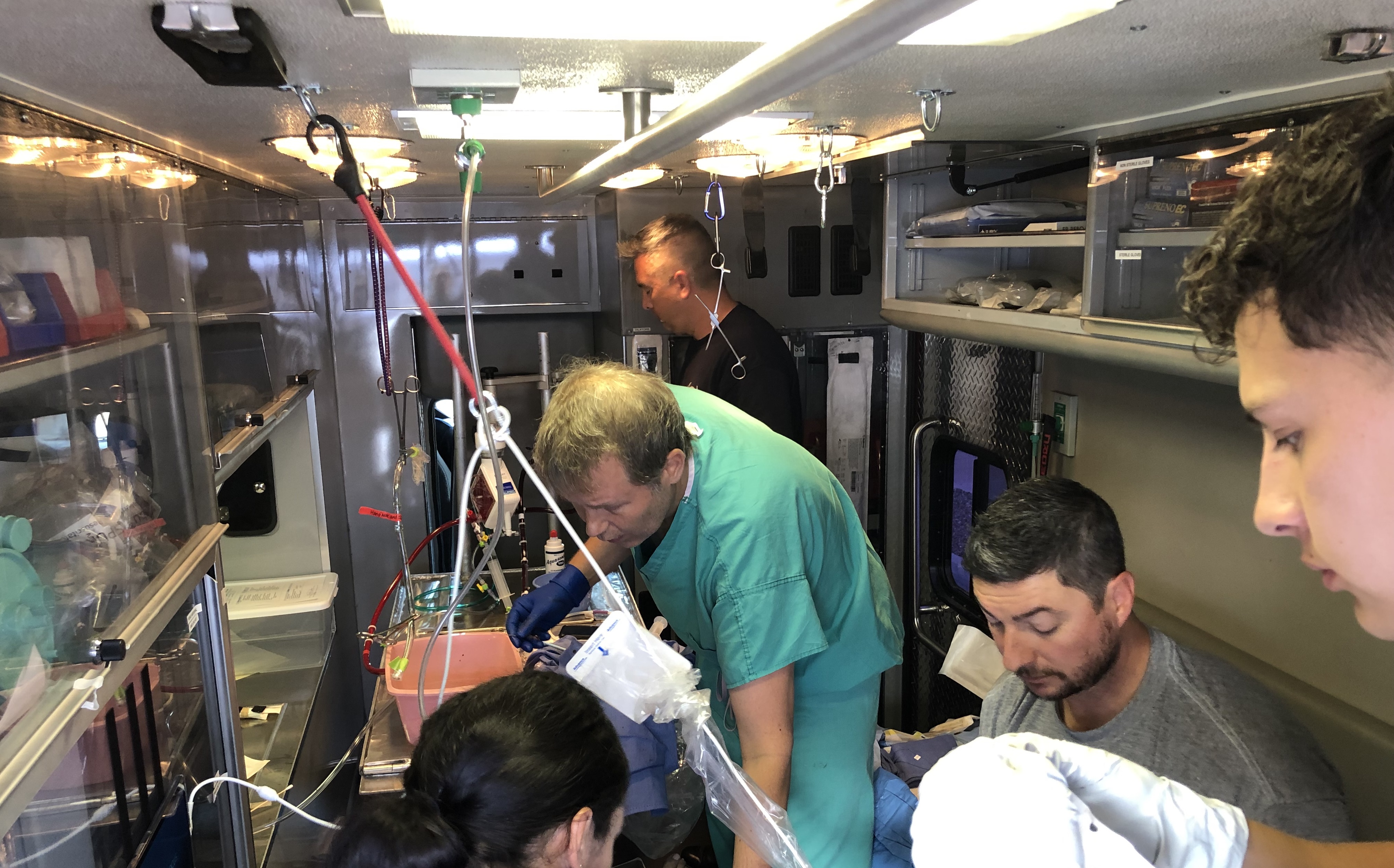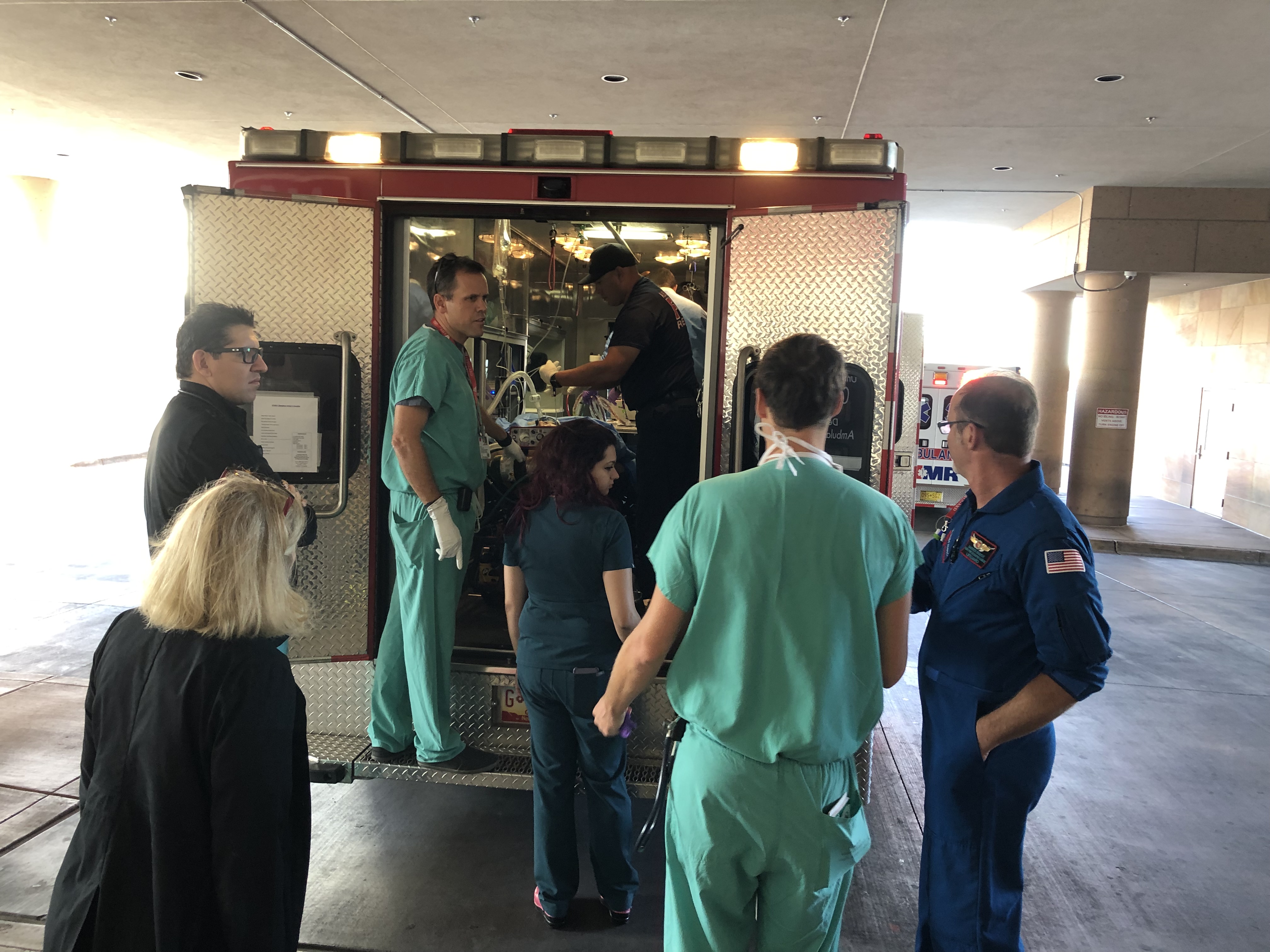Program Provides Research Opportunities for Undergraduate Students

Mobile Lifeline
UNM Hospital & Albuquerque Fire Rescue Bring Portable Heart-Lung Technology to the Patient
Last week, Albuquerque Fire Rescue and Albuquerque Ambulance Services responded to a middle-aged patient who reported experiencing chest pains. When the patient collapsed in front of the responders, they immediately started life-saving measures and alerted the ECMO team at University of New Mexico Hospital.
ECMO - it stands for Extracorporeal Membrane Oxygenation - is essentially a portable heart-lung machine, and it is used extensively in the UNMH emergency department for patients in cardiac arrest. But it has never before been used in the field in the United States.
By taking over the work of circulating oxygen-rich blood throughout the body, ECMO can improve a critically ill patient's chance of recovery.
In the United States there is just a 10% chance of survival from a cardiac arrest when it happens outside of the hospital, says Steve McLaughlin, MD, chair of UNM's Department of Emergency Medicine.
"UNMH is one of several institutions across the country that is able to put patients on ECMO in the emergency department after cardiac arrest, giving the medical team time to provide necessary life-saving treatment," McLaughlin says. "Using this technology the survival rate from cardiac arrest in Albuquerque has improved dramatically over the past year."
Timely transport is critical to this process. "Over the past year a partnership between UNM Hospital and Albuquerque Fire has been focused on improving survival from cardiac arrest by incorporating ECMO," McLaughlin says.
Together, they have developed a program to take the ECMO technology to patients who undergo cardiac arrest at home or in the workplace using a specially modified Albuquerque Fire Rescue ambulance. The goal is to bring this life-saving technology to patients who would not otherwise get to the hospital in time.
This week's response is the first time this procedure has been attempted in the field in the U.S., and only one other case has ever been reported anywhere.



